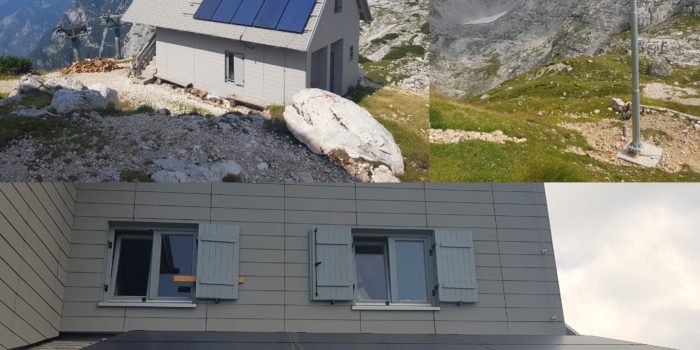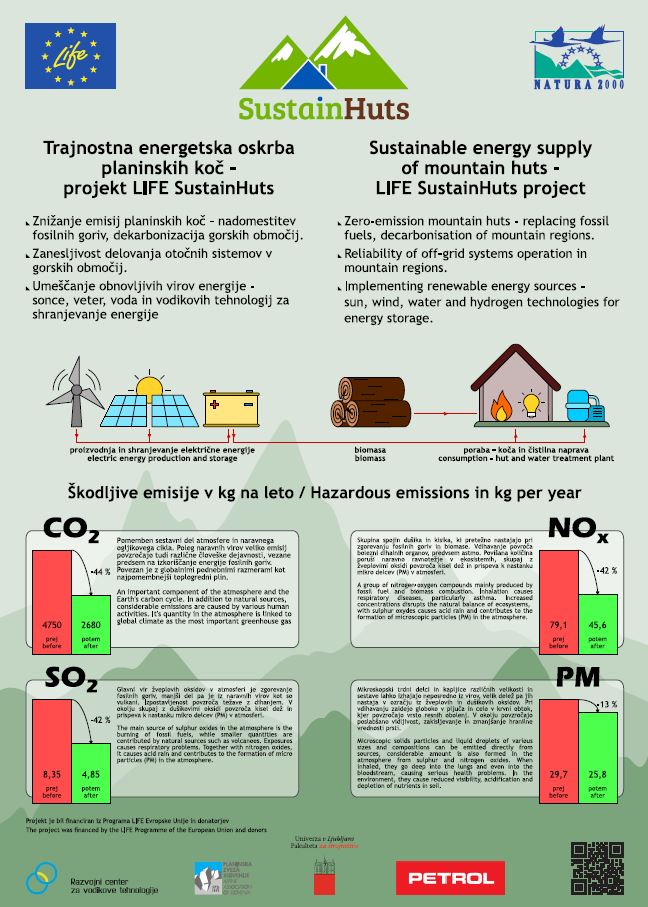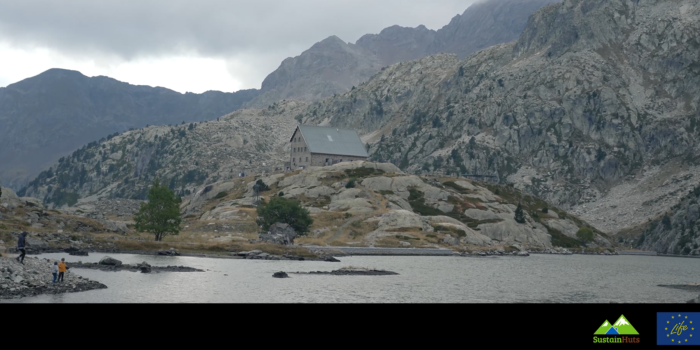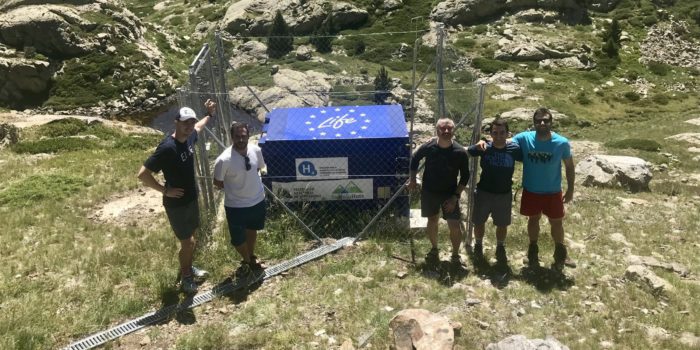SustainHuts project continues to contribute to improving air…

Pogačnikov hut completes its technologies implementation
Pogačnikov hut is currently more sustainable thanks to the technologies implemented within SustainHuts project. The three Slovenian partners, University of Ljubljana (UL), Alpine Association of Slovenia (PZS) and the Development Centre for Hydrogen (RCVT) worked together in order to define the technologies finally installed.
As part of the SustainHuts project, Pogačnikov hut has been equipped with a new electricity supply system based entirely on solar and wind energy. The system consists of a 1000 W wind turbine, two packs of photovoltaic systems of total power of 8550 W, a set of lithium-ion batteries capable of storing 20000 Wh of energy, power converters and already existing fossil fuel unit that serves only as a backup system (as it is shown in the figure). The first season of operation has just ended and shows that renewable energy sources were able to cover all electricity and heat requirements, despite a record in the amount of visits to the hut. Visitors can still enjoy all the comfort offered by the hut before, but at the same time the impacts to the environment of the Triglav National Park have been significantly reduced. Prior to the modification of the energy system, the main emissions to the environment were due to the operation of the diesel and, occasionally, the gasoline power unit, which provided sufficient electricity for different consumers in the hut, for the wastewater treatment plant, and the cable car for the transport of materials to the hut. After the modification developed in SUSTAINHUTS, both units are out of operation, as photovoltaic and the wind turbine, together with a stack of lithium-ion batteries, provide sufficient electricity for the operation of the hut. Energy for heating is still provided with mixed biomass.

Figure 2: Energy system of the hut after the installation of the technologies implemented.
Studies of the environmental impacts of the old situation and after modification of the energy supply systems show that carbon dioxide (CO2) emissions will be reduced by 44%, nitrogen (NOX), sulphur oxides (SO2) by 42% and particulate matter (PM) by 13%. The latter are mostly the result of biomass heating, which remains unchanged, so the decrease is not so pronounced.
In the scope of the project, an informative board with basic information about the project and with values of target emissions in the project was also designed. The main objective is was to show the average reduction of the target emissions as CO2, NOX, SO2 and PM after modifications in energy distribution system (heat and electricity) in the huts. In addition to numerical results each type of emission has additional description so people can read what causes emissions, what their influence to environment is and how they affect human health. Below, the information board from Pogačnikov hut in Slovenia is shown.
Figure 3: Information board installed in Pogačnikov hut.







